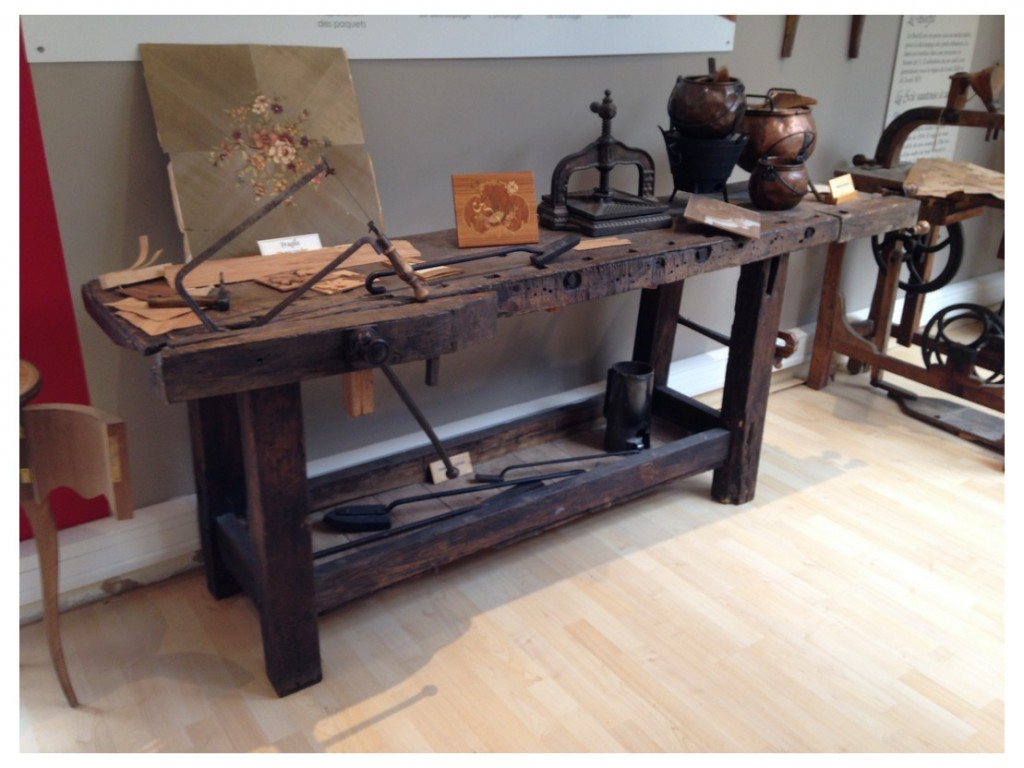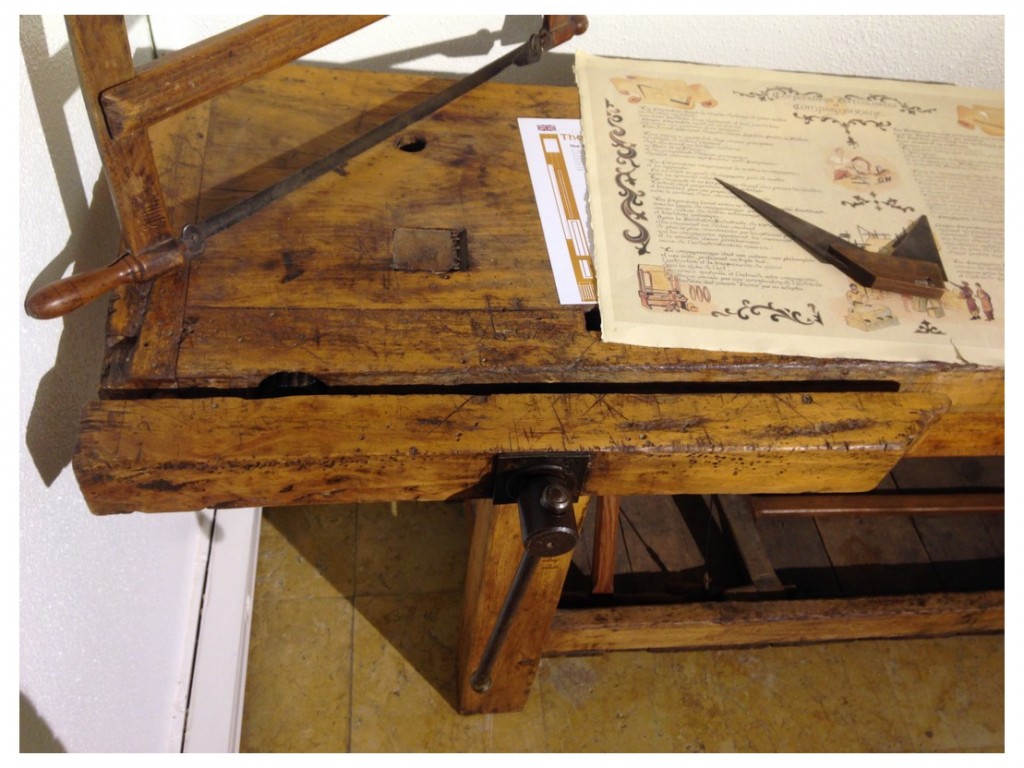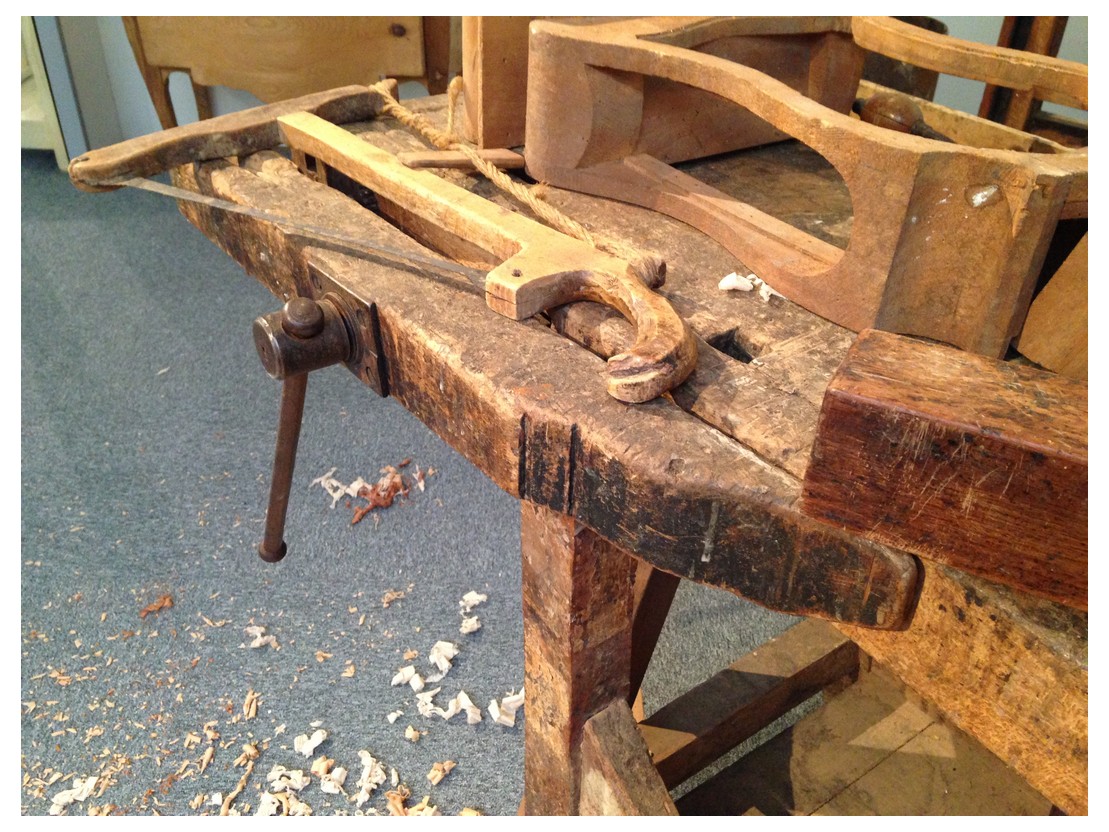We may receive a commission when you use our affiliate links. However, this does not impact our recommendations.
Take one leg vise. Rotate it 90°. Now you have a Basque face vise.
Woodworker Matt Talley is working in France right now. And during his free time he is hunting down workbenches in the Southern France/Basque region. He’s posted photos of some of his interesting finds at his web site here.
I’ve been poring over his photos and found lots of interesting details (the bolted-on dog strip, for one) that I’ll write about at a later date. But for this post, I want to focus on the face vise.
Talley asked one of the local “old guys” about the unusual vises and he responded it was a common feature of benches in the region. But how do they work?
Tally says he’s seen three mechanisms for applying pressure to the right of the screw, which is the working area of the vise.
1. A parallel bar guide with a collar. Imagine something like this setup from Richard Maguire’s pinless face vise.
2. A square wooden block, similar to what you see in many English face vises, such as the Nicholson workbench. The block runs in a channel and wedges in the channel when a workpiece is placed in the vise’s jaws.
3. No guide. The jaw applies pressure to the work when a wedge is placed between the jaw and benchtop on the left of the screw.
Also interesting is the decorative detail cut into the right-most end of the vises’ jaws. I suspect this feature makes it less likely you will run into the jaw when you are planing on the benchtop.
Thanks to Tally for sharing his finds (and yes, he plans on bringing some workbenches home with him when he leaves France).
— Christopher Schwarz
Like old-style workbenches. Check out my DVD that covers how to make an 18th-century workbench using hand tools only. It’s available from ShopWoodworking.com.
Here are some supplies and tools we find essential in our everyday work around the shop. We may receive a commission from sales referred by our links; however, we have carefully selected these products for their usefulness and quality.















![How To Sharpen A Gouge [Video]](https://www.popularwoodworking.com/wp-content/uploads/bfi_thumb/dummy-transparent-olcy6s63it1p9yp7uhusjas7c8kahafrhg9su7q9i0.png)


I have always loved old work benches. I think their is a possibility of a book showing antique woodworking benches from Europe and possibly around the world. However I am not very interested in those from the Oriental countries where you need to sit on the ground to use them. I have seen several interesting one’s from Italy, and England too. I like the photo’s showing a tape measure or cup to compare the size of the bench to the measure.
I’m also intrigued by the “half” bow saw. Do you know if there is a special purpose that this design addresses?
I saw a vise like this on old bench in south Italy, the only I seen of this kind until your post…
http://www.legnofilia.it/files/posted_images/11/gamba1.jpg
Thanks, Leo.
Love the “half bow saw”. I’ve never seen one like it. It’s nice to see how these old benches look like they’ve seen lots of work. Makes me feel better about the occasional dings mine gets.
Any insight or more pictures of the saw in the background of picture #4
Thanks, Tony
Nice to see these great examples of workbenches. What is the tool laying on top of the paper?
Talking about France, I am going to Lot et Garonne in a few weeks. Does anybody know of soms nice must see woodworking places in that area? Or markets?
Best regards,
Yuri
The bow saw is also quite unique! It will be interesting to see what Matt brings back. Can you imagine the look on the baggage handlers face:-)
Thanks Chris,
I like these examples.
It shows how people create these according to the work they do.
Sort of an evolution from just a flat bench.
Cheers
Rocky